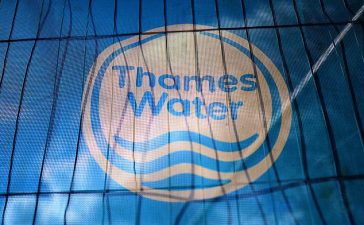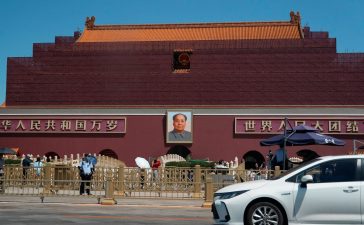
Adaptimmune Therapeutics PLC (NASDAQ:), a biotechnology company specializing in T-cell therapy, held a conference call to discuss its Q1 2024 financial results and business updates. The company focused on the regulatory progress of afami-cel, their flagship T-cell therapy for solid tumors, and provided insights into its commercial launch preparations.
Adaptimmune is gearing up for a late cycle review meeting with the FDA and has not been requested to provide an Advisory Committee (Ad Comm) or a Risk Evaluation and Mitigation Strategy (REMS) program. They have outlined a strategy to initiate the launch with 6-10 treatment centers, with plans to expand to about 30. The company also reported securing significant debt financing and raising funds to support the launch of afami-cel and the development of other pipeline projects.
Key Takeaways
- Adaptimmune anticipates a late cycle review meeting with the FDA for afami-cel this month.
- The company is preparing for the commercial launch of afami-cel without the need for an Ad Comm or REMS program.
- A commercial and medical affairs team is in place, targeting 6-10 treatment centers initially.
- Adaptimmune plans to expand to around 30 treatment centers post-launch.
- Financially, the company secured up to $125 million in debt financing and raised about $30 million in Q1.
- They expect to have enough funds for the launch of afami-cel, followed by lete-cel and other projects.
Company Outlook
- Adaptimmune is preparing for the commercial launch of afami-cel, with a focus on ensuring a smooth patient journey from testing to treatment.
- The company plans to scale up to all 30 Advanced Therapy Centers (ATCs) within 18 months.
- They anticipate recognizing the first revenues from afami-cel in Q4 of this year.
- Long-term potential in the autoimmune disease area is being considered for their TCR T-cell therapies.
remove ads
.
Bearish Highlights
- Factors such as patient identification, referral to a treatment center, and reimbursement could potentially affect the patient journey timeline and the commercial launch of afami-cel.
Bullish Highlights
- Adaptimmune has completed all inspections of their manufacturing facilities and clinical trial sites with positive outcomes.
- The company has a robust financial position to support its upcoming product launches and development of its pipeline.
Misses
- There were no specific financial misses reported during the call. However, the company did not discuss any challenges or setbacks in the development or approval process of afami-cel.
Q&A Highlights
- The SURPASS data for head, neck, and bladder indications are expected later in the year, which will provide sufficient data to make directional decisions.
- The companion diagnostic test for afami-cel is expected to be approved concurrently with the therapy, aiming for the first patient doses in Q4.
- The typical turnaround time from apheresis collection to product release is between four and six weeks, as reported by John Lunger, who leads manufacturing.
In summary, Adaptimmune appears to be on track with the regulatory process for afami-cel and is actively preparing for its commercial launch. The company’s financial stability, positive outcomes from facility inspections, and the anticipated approval of a companion diagnostic test are promising indicators for its success in the near future. Investors and stakeholders are likely to watch closely as Adaptimmune approaches the critical late cycle review meeting and moves towards the commercial availability of afami-cel.
InvestingPro Insights
Adaptimmune Therapeutics PLC (ADAP) has made strides in its operational and financial strategy, as evidenced by its preparation for the commercial launch of its T-cell therapy, afami-cel. As investors look to understand the company’s market position and future prospects, key data from InvestingPro provides a clearer picture.
remove ads
.
InvestingPro Data indicates a market capitalization of $293.9 million, reflecting the company’s current valuation in the market. Despite a lack of profitability with a negative P/E ratio of -2.81 and a Price / Book ratio of 7.75, which suggests that the stock may be trading at a premium relative to its book value, Adaptimmune has shown a remarkable revenue growth rate of 122.05% over the last twelve months as of Q4 2023.
Two InvestingPro Tips offer additional insights into the company’s financial health and stock performance. Firstly, Adaptimmune holds more cash than debt on its balance sheet, which can be a positive sign for investors looking for financial stability. Secondly, the company’s stock price has experienced a large uptick over the last six months, with a 130.0% return, indicating significant investor interest and potential confidence in the company’s future.
For readers interested in further analysis and additional InvestingPro Tips, there are 9 more tips available on Adaptimmune, which can be accessed through InvestingPro’s dedicated page for the company at https://www.investing.com/pro/ADAP. Remember to use the coupon code PRONEWS24 to get an additional 10% off a yearly or biyearly Pro and Pro+ subscription, providing an even more comprehensive understanding of Adaptimmune’s investment potential.
Full transcript – Adaptimmune Therapeutics (ADAP) Q1 2024:
Operator: Good morning, ladies and gentlemen, and welcome to the Adaptimmune Q1 2024 Financial and Business Update Conference Call. I would now like to turn the meeting over to Ms. Juli Miller. Please go ahead, Ms. Miller.
Juli Miller: Good morning, and welcome to our conference call to discuss our first quarter 2024 financial results and business updates. I would ask you to review the full text of our forward-looking statements from this morning’s press release. We anticipate making projections during this call and actual results could differ materially due to several factors, including those outlined in our latest filings with the SEC. Adrian Rawcliffe, our Chief Executive Officer, is here with me for the prepared portion of the call, and other members of our management team will be available for Q&A. With that, I’ll turn the call over to Adrian. Ad?
remove ads
.
Adrian Rawcliffe: Thanks, Juli, and thanks, everyone, for joining us for our Q1 call. I plan to provide some brief comments before we go into Q&A. The comments are going to be brief because a couple of weeks ago, we held an Investor Day and we provided a fairly comprehensive update on the regulatory status of afami-cel as we move towards the PDUFA date of 4th of August. And we also talked about how important this is for the field as the first approved engineered TCR T-cell therapy for solid tumor indication. We also discussed our preparations for the commercial launch of afami-cel in some detail. We said that we’d be ready to do this on approval of afami-cel, and that this would be the beginning of a commercial sarcoma franchise that we feel has significant and underappreciated value. In this morning’s press release, we provided a further update on the BLA progress, and our Head of Late Stage Development, Dennis Williams, is here for the Q&A portion of this call. In short, our interactions with the FDA are progressing as planned and we’re looking forward to our late cycle review meeting in the second half of this month. Thus far the FDA has not requested an Ad Comm or a REMS program. We look forward to the labeling discussions and also to commercialization in due course, and I’m happy to confirm that our customer-facing commercial and med affairs team are now fully in place. Cintia Piccina, our Chief Commercial Officer is here for the Q&A as well. As I said, we are on track to be ready to launch on approval. We have a focused team starting at six to 10 treatment centers and ramping up to approximately 30 in due course. And if you revisit the Investor Day presentation by Dr. Mihaela Druta, which is available on our website, you will see that the expectations and anticipation for afami-cel within the sarcoma community are very high. I think that sense of anticipation was reinforced by Philip Leider, Patient Advocate and President of the Sarcoma Alliance, who lost his sister to sarcoma. And he, I think, very eloquently highlighted the demand for novel therapies in this space. So, we are scaling our manufacturing to be able to meet what we anticipate to be the launch volumes for afami-cel in the second half of 2024. And in summary, all is on track for the launch of afami-cel on approval, and that’s expected around our PDUFA date in August and is highly anticipated by the sarcoma community. And obviously, we are very eager to get this product into the hands of this community that has worked so hard with us over the last decade to develop medicines for sarcoma. Behind afami-cel, we are also progressing the development of lete-cel, and I’ll point you towards a presentation of the interim data analysis from the pivotal IGNYTE-ESO trial in synovial sarcoma and MRCLS that we previewed at a high level last year. These data look very similar to afami-cel other than of course, they are in both synovial sarcoma and myxoid round cell liposarcoma, and will be presented at a platform presentation at ASCO by Dr. Sandra D’Angelo. This will be an important milestone for people’s understanding and the derisking of this cell therapy as we continue to move towards having a BLA in place in 2025 with anticipated approval for lete-cel in synovial sarcoma and MRCLS in 2026. You will have seen another press release from us this morning announcing that we’ve secured up to $125 million in debt financing with Hercules Capital (NYSE:), with the first tranche of $25 million available on closing and an additional $25 million available on afami-cel approval. In addition, you will have seen that in Q1, we raised approximately $30 million off the ATM based on significant inbound inquiries. We’ve taken these steps to secure our financial position and have cash runway into late 2025. And with this runway, we have the funds necessary to execute on our priorities, the launch of afami-cel, followed by lete-cel, and also executing on the other pipeline projects, such as the Phase 2 trial with uza-cel for platinum-resistant ovarian cancer. And Gavin Wood, our Chief Financial Officer, is here for the Q&A as well. So with that, I’d like to turn it over to the operator for questions. Operator?
remove ads
.
Operator: Thank you. [Operator Instructions] Our first question is from Jonathan Chang from Leerink Partners. Please go ahead.
Jonathan Chang: Hi, guys. Thanks for taking my questions. First question, can you talk about the impact of the debt agreement announced today on your cash runway guidance? I’m just trying to better understand what’s assumed in the current guidance.
Adrian Rawcliffe: So, Gavin?
Gavin Wood: Yeah. Hi, Jonathan. So, a number of things have changed since we last gave guidance at the start of the year. Clearly, we had the termination of the Genentech agreement, and we’re still working through the terms of that termination agreement. We’ve made significant progress on afami-cel and at the broader — development of the broader sarcoma franchise. As Ad just mentioned, we’ve raised money under the ATM, and we’ve also executed a new debt facility with Hercules. Putting all those moving pieces together, we thought it prudent bringing our cash runway by about a quarter to late 2025.
Jonathan Chang: Got it. And what assumptions are there for how much of the debt is being drawn down?
Gavin Wood: We drew down $25 million at close, and there’s $25 million available at the PDUFA date.
Jonathan Chang: Got it. And then, second question, just can you help set expectations for the upcoming ASCO IGNYTE-ESO presentation? Thank you.
Adrian Rawcliffe: Dennis, do you want to take that?
Dennis Williams: Yeah, sure. So, for the ASCO presentation, we’re going to be presenting results on the interim analysis of the pivotal IGNYTE-ESO trial. So, this is 45 patients in that trial followed for at least six months. It’s evenly comprised of patients with synovial sarcoma and myxoid round cell liposarcoma. So, we’ll present the efficacy data and safety data that were available at that interim analysis.
remove ads
.
Jonathan Chang: Got it. Thanks for taking my questions.
Adrian Rawcliffe: Okay, Jonathan.
Operator: Thank you. Our following question is from Marc Frahm from TD Cowen. Please go ahead.
Marc Frahm: Hey, thanks for taking the questions. Maybe just first, nice that you’re giving details along the way of the FDA review and the late cycle review meeting coming up. Just can you kind of review what your disclosure strategy is going to be around some of the information that may be conveyed or gleaned by you guys at that meeting?
Adrian Rawcliffe: So, why don’t I take a stab at that? So, we’re actually running pretty hard towards the late cycle review meeting and the discussions on labeling that we anticipate and on post-marketing commitments. We’re going to be focused on that in the run up to the PDUFA date. And I think if there’s anything material that comes out from that, we will be disclosing. Otherwise, we’re pushing hard for the discussions with the agency and getting to PDUFA and then being able to launch.
Marc Frahm: Okay. As you get into the labeling decisions, I mean, what do you view as the kind of major kind of questions that need to be answered about indication statement and things like — and things to include or not include in the label?
Dennis Williams: Yeah. So, hi, this is Dennis Williams. I think it’s like I mentioned at the Investor Day, some of this really comes down to individual sort of wording that goes in the label. Like, for example, I’ll give the — to follow up on the example I gave at Investor Day, how we manage cytokine release syndrome, right? So, we’ll be talking about how that information should be structured in the label, how we give tocilizumab or how we would recommend that product and for what grade CRS. So, sometimes it’s really about the finer points of how the words are in the label. We have had no discussions to-date with the FDA around the indication statement and we feel very confident that the indication statement we proposed is more or less a few words is what we’re going to end up with at the end of this review.
remove ads
.
Marc Frahm: Okay. Thanks. Very helpful.
Adrian Rawcliffe: Thanks, Marc.
Operator: Thank you. Our following question is from Tony Butler from Rodman & Renshaw. Please go ahead.
Tony Butler: Yes, good morning. I’m very respectful of the focus on afami-cel and to a lesser extent on lete. But I wanted to ask about uza-cel and whether or not, at least in the calendar year, there was any anticipation of a follow-up on SURPASS-3 either in ovarian or in the Phase 1 with bladder, et cetera? Thanks very much.
Adrian Rawcliffe: So, why don’t I cover that with what we’re thinking about for uza-cel. With SURPASS-3 in platinum-resistant ovarian cancer, that’s designed with the potential to end up as a registrational trial, and therefore, we won’t be putting out any data on that until we have at least enrolled all of the patients in that trial. There are interim reads for futility analysis, but we won’t be communicating the data until we’ve at least enrolled all of the patients in that trial, which we anticipate being a 2025 event, a full enrollment of that trial. So, with respect to the other indications, so we’ve now focused down onto ovarian cancer in SURPASS-3 and the two other indications in head and neck and bladder. And the objective is to gather data in a Phase 1 setting in a range of patients, potentially in combination with checkpoint inhibitors as well. And what we’ve said there is, we anticipate giving an update on the basis of the data that we’ve gathered at the tail end of this year about how we anticipate moving forward with those, which would include the data themselves.
remove ads
.
Tony Butler: Thanks very much.
Adrian Rawcliffe: Cheers, Tony.
Operator: Thank you. Our following question is from Graig Suvannavejh from Mizuho Securities. Please go ahead.
Graig Suvannavejh: Good morning. Thanks for taking my question, and congrats on all the progress. Just wanted to go back to the FDA review process and in particular also in light of the great Analyst event or Investor Day you had down in Philly, just curious if there have been any other perhaps progress or maybe any additional inspections by FDA on the manufacturing facilities. Do you expect any other visits prior to approval? Just wanted to get a better handle on how things were shaping up there as it relates to CMC manufacturing in your facilities.
Dennis Williams: Yep. Hi, this is Dennis Williams again. So, yes, I think at this point, all the inspections are expected to be completed, right? So, we both manufacturing facilities that we utilize, so our own manufacturing for afami-cel drug product, the lentiviral manufacturing facility that we — for the vector that supplies for drug product has been inspected. That had a good outcome. And all the clinical trial sites that were inspected also are completed. They all had a very good outcome. And as I mentioned during Investor Day, the Navy Yard facility here from a GCP standpoint was also inspected. So, at this point, we think all the inspections are complete. I guess there’s always a scenario where another clinical site, but — could be inspected, but at this point, I think at this stage in the review, the inspections are completed.
remove ads
.
Graig Suvannavejh: Okay. Thank you for that clarity. And just with regards to earlier comments the company made about not anticipating or not expecting perhaps an Ad Comm or a REMS program, maybe just on the latter with regards to a REMS, just from a calendar perspective, is this something that a discussion would naturally have happened by now or is it still part of a potential discussion between now and the PDUFA? Thank you.
Dennis Williams: Yep, sure. So, we did not submit a REMS in this BLA application. And we’ve had discussions with the FDA during the review. And I think at the time I had this discussion at Investor Day, the FDA review was ongoing and there was no decision about a REMS at that time. And they certainly had not asked for one at that time. You’re correct that had — a REMS been requested, that that time would have elapsed already. That would have occurred within a few weeks of that mid cycle meeting. I can just say, in general, the conversations we’ve had with the FDA, we don’t anticipate a REMS for this product.
Graig Suvannavejh: Okay. Thank you. And maybe just the last question, if I could. Just if you could remind us all, assuming an on-time approval, how we should be thinking about the shape of the uptake curve, particularly from a revenue perspective?
Adrian Rawcliffe: So, why don’t I touch on that? What we’re basically guided to is that we’ve not given guidance on the specific numbers of patients that we anticipate coming through in the early part of the launch. What we have said is that it’s important to understand that because this is an autologous product that’s manufactured, it needs to be screened for targets and then manufactured and then returned to patients. Whatever you think that uptake curve looks like, it’s essentially frame shifted by and we’re guiding to about a quarter from — so the first revenues from afami-cel would — the first patients would not be dosed, treated and the first revenue is recognized until Q4 this year, even though we anticipate approval and we anticipate starting to enroll patients from the PDUFA date in August.
remove ads
.
Graig Suvannavejh: Okay. Thank you.
Adrian Rawcliffe: Thank you.
Operator: Thank you. Following question is from Michael Schmidt from Guggenheim. Please go ahead.
Unidentified Analyst: Hi, this is Paul on for Michael. Thanks for taking our question. So, on the afami-cel launch, you talked about targeting about six to 10 sites for that early launch. But looking beyond this year, what’s your current thinking on strategy for scaling up to all 30 ATCs across the country? And how many of those centers have had experience with afami-cel in the clinical trial setting?
Adrian Rawcliffe: I’ll ask Cintia to talk to that. Cintia?
Cintia Piccina: Thank you. Yes. So, we are — as Adrian said, we are targeting about six to 10 sites during the launch period, meaning the first quarter after launch, and we are already starting to engage beyond those with the expectation to have up to the 30 sites available about 18 months after launch. Out of these 30 sites in total, 16 of them, which will be the priority sites, have clinical experience with afami-cel and some additional sites that are part of the 30 also have experienced with lete-cel. So, all of our 30 ATCs in the future — all of our clinical sites from lete-cel and afami-cel will be part of those 30. And again, we know that those sites see the majority of the synovial sarcoma patients in the country.
Unidentified Analyst: Great. Thanks for that. And maybe just a follow-up, as you look ahead to the launch, can you give a sense of what kind of metrics you’re planning to sort of disclose in the early months to give a sense of how that launch is progressing? This has been an area of focus for the AMTAGVI launch for Iovance. So, just curious if we can expect updates on number of patients identified versus infused or if you’re likely to provide more qualitative updates in the early month? Thank you.
remove ads
.
Adrian Rawcliffe: So, we plan on updating that at our next Q call.
Unidentified Analyst: Got you. Thanks so much.
Adrian Rawcliffe: No problem. Thank you.
Operator: Thank you. Our following question is from Arthur He from H.C. Wainwright. Please go ahead.
Arthur He: Hi, Ad and team. This is Arthur from H.C. Wainwright. Thanks for taking my questions. I guess I just had a broad picture question. So, as we see the cell therapy industry moving to the autoimmune disease area, could you help educate us the potential from your platform aiming for the autoimmune disease? I know you guys are laser-focused on the launch, but just curious on the potential there. Thanks.
Adrian Rawcliffe: Sure. So, as you’ve said, we are laser-focused on the launch. We have — if you dig into the history of the company long enough, we have explored the opportunity to develop TCR-targeted therapies for autoimmune disease, mostly focused on Treg programs. But I think in the short term, our focus is on, obviously, the launch of afami-cel and the sarcoma franchise, but also in between that and the very long-term future in autoimmune and maybe other indications, just the massive unmet need that can be addressed with TCR T-cell therapies in the oncology space. And if you look at the rest of our pipeline, you’ll see that as we — over the coming years, we will very quickly move from a sarcoma-only franchise with two products and $400 million of sales into much larger patient populations. And there’s an opportunity with uza-cel in, obviously, ovarian, bladder and head and neck. And then beyond that with PRAME, given the recent interesting data with that target and with CD70, both of which are in the late preclinical pipeline, and the opportunity there to address over 100,000 patients that are currently dying from their indications with the right target and the right HLA type. And so, we see this in terms of horizons, short-term sarcoma, longer-term broaden that out, making cell therapies potentially curative and mainstream across a broad range of tumors, and then taking cell therapies into other spaces where patients can benefit in other non-oncology indications in the long-term.
remove ads
.
Arthur He: Thanks for the colour.
Operator: Thank you. Our last question is from Peter Lawson from Barclays (LON:). Please go ahead. Mr. Lawson, your line is open. You may proceed with your questions.
Peter Lawson: Great. Thank you so much. Thanks for taking my question, and thanks for the update. Wonder if you could talk around the turnaround time, kind of time it would take between kind of approval, booking the initial revenues, as we just think about the turnaround time, your end, also the turnaround time with the hospitals and the patients, and just any variables that we should be thinking about?
Adrian Rawcliffe: Cintia, do you want to talk to that?
Cintia Piccina: Yes, absolutely. So, when we think about the turnaround time from the patient journey perspective, we need to consider that the patients, when they are identified, the first step is that they need — it should be tested for HLA and MAGE-A4, which is a process that can take a few days. Then, we go through the apheresis process, scheduling apheresis. And then, when we receive the apheresis material from a manufacturing turnaround time, then that would be of about 30 days. And then, shipping it back to the sites. So, that’s why at launch, the companion diagnostic test will be approved at the same time — that’s our expectation, at the same time that afami-cel is approved. So, we would expect to see, as Adrian mentioned before, first patients dosed during the fourth quarter of the year.
remove ads
.
Peter Lawson: Got you. Okay. Thank you. And then, after the patients identified and the apheresis, what’s the general timeline you expect around that? I imagine there’s a fair amount of variability.
John Lunger: Yes. Hi, this is John. I’m leading manufacturing. So, the turnaround time from — typical time from the collection of the apheresis material until the release of the product to send it back to the site, tends to range between four and six weeks.
Peter Lawson: Okay. And are there things that we should be thinking about like front-end and the back-end that are outside your control? And kind of the sense you get how long it takes patients to kind of get through that funnel from being identified by diagnostic test for HLA, and then, the other end, once it gets to the hospital and actually gets infused?
Cintia Piccina: Yes. So, a couple of things to consider before will be patient identification, the testing. Then, depending on where these patients are, they will have to be referred to a treatment center. That can take a few days. Reimbursement is also something that will be checked at that very early part of the journey. Then, from apheresis all the way back to infusion, it’s mostly straightforward. We could have potentially the patient condition getting worse, or other things that are out of control. But then it’s mostly a little bit more straightforward.
Peter Lawson: Got you. Okay, Just I guess a final question just around the SURPASS data. I guess it’s later this year, we get head, neck and bladder. Just the expectations around the number of patients we should see and kind of what you regard as a positive coming out of those data sets?
remove ads
.
Adrian Rawcliffe: Elliot?
Elliot Norry: Yeah, thanks. We haven’t guided to specific numbers that we would anticipate as it relates to patient dosing. We have said that we anticipate having sufficient data to make directional decisions regarding both of those indications by the end of the year.
Peter Lawson: Great. Thanks so much.
Adrian Rawcliffe: Thanks, Peter.
Operator: Thank you. We have no further questions registered at this time. I would now like to turn the meeting over to Mr. Rawcliffe.
Adrian Rawcliffe: So, thank you everybody for your time today. Thank you for your questions. Look forward to seeing those of you at ASCO who are attending and look forward to updating you as we move towards approval and launch of afami-cel later on this year. Thanks a lot. Take care.
Operator: Thank you. The conference has now ended. Please disconnect your lines at this time, and we thank you for your participation.
This article was generated with the support of AI and reviewed by an editor. For more information see our T&C.






